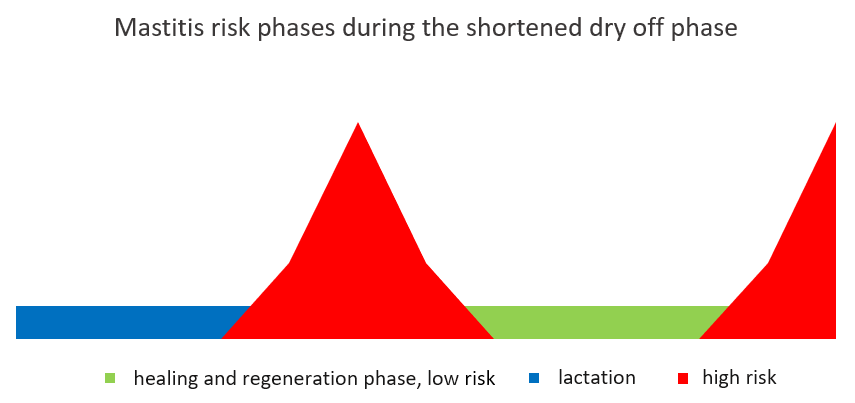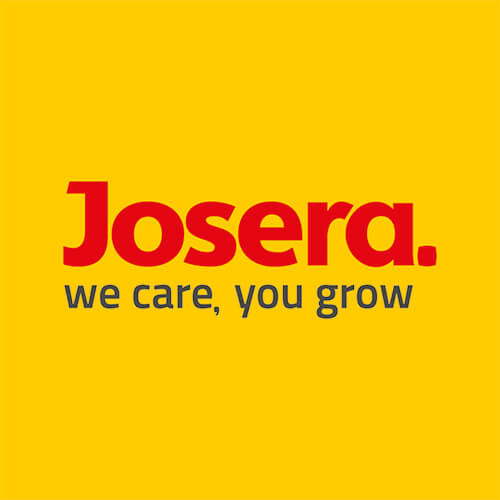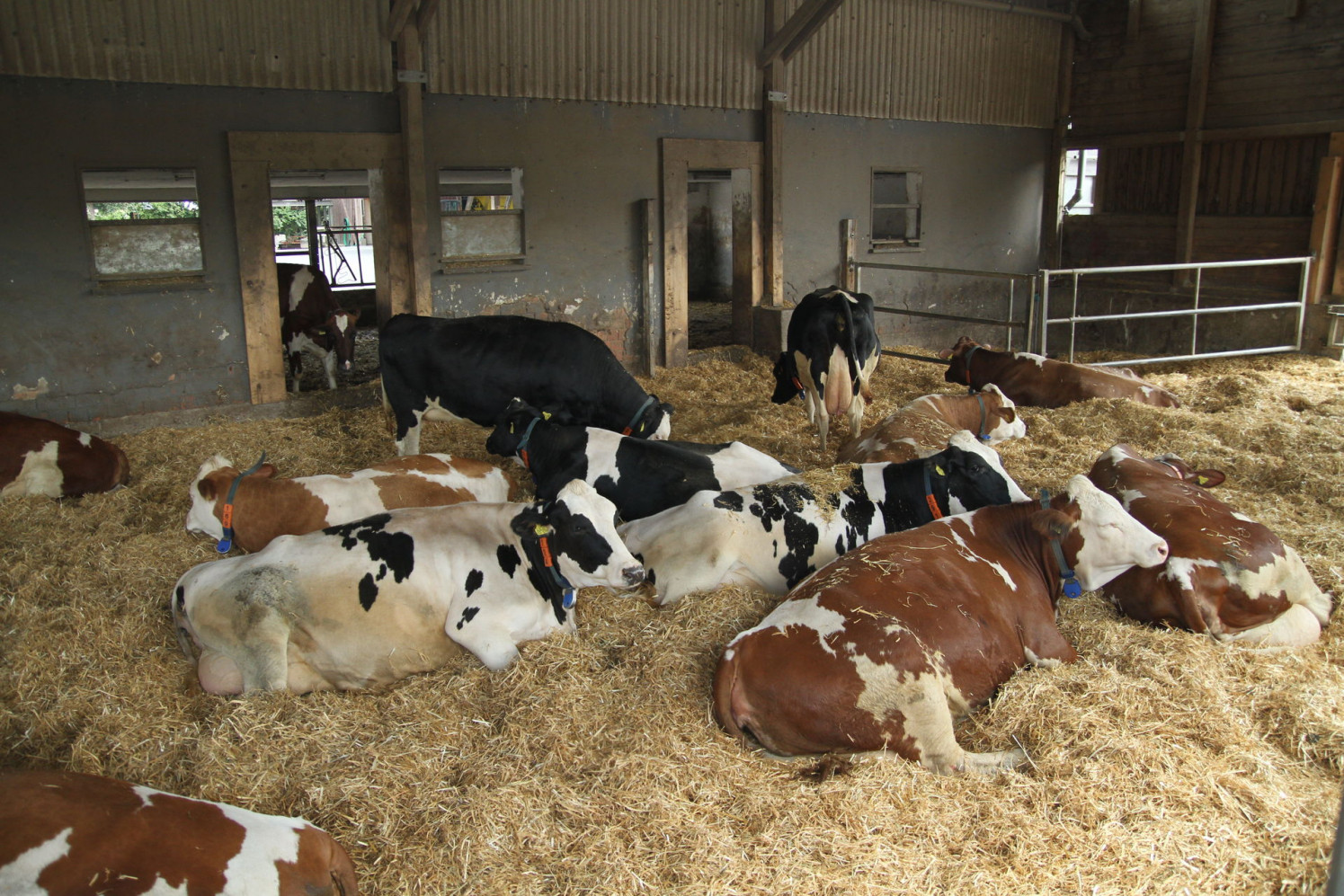Table of Contents
- Understanding drying off!
- What happens in the dry off phase?
- The performance of the next generation
- Risk of mastitis
- Milk yield
- Metabolism and fertility
- Shortening the dry off period: Yes or no?
- Tips and tricks for the dry off period
- Grazing for dry cows?
- We help your cows through the transit phase!
Understanding drying off!
Dry cows do not give milk, but still need feed, space and attention. An obviously unproductive time in the life of a cow and unsatisfactory for the farmer. It is not easy to keep the balance between sufficient feed intake and a possible fattening of the animals, the feed changes put a strain on the metabolism. And then also the good cows that were still giving almost 25 litres of milk at the time of drying off… actually a pity about all that milk.
Almost every farmer has had these thoughts at some point. In order to resist the temptation to drastically shorten the dry off phase or even milk through completely, it is important to understand why we dry off the cows – and why good dry off management brings many advantages.
What happens in the dry off phase?
Let’s not forget: When we talk about a cow in the dry off phase, we are actually talking about two animals!
For the cow, the dry period is a time of preparation for birth and the start of lactation. Heifers form the udder for the first time, animals in the first lactation largely restore the initial position of their udder. From the second lactation onwards, the connective tissue of the udder tends to increase during the dry period. Subclinical mastitis can heal and optimal conditions for high-quality colostrum are created. The energy used for milk production during lactation now benefits the calf and its own regeneration.
For the growing calf, the dry off period is even more important: here it is decided with which basic conditions it will start life.
The performance of the next generation
The productivity and vitality of the calves are decisively influenced in the last weeks of gestation. Since on most farms the offspring is provided from within the herd, it can therefore be said that the foundation for good future herd performance is laid during the dry off period. Heat stress, nutrient deficiencies and diseases of the mother even have an effect not only on the next, but up to the third generation of female offspring! Calves of optimally supplied cows, on the other hand, are more resistant, less often and less severely ill, show higher gains and later give more milk.
Particularly striking: Calves from mothers who suffered from heat stress during the dry off period have lower birth weights and usually only catch up with their peers in the second year. The problem with this is that in the second year the mass gain is not so much in body size but in fat. The result is small, fat heifers. And this in turn leads to the well-known problems…

Risk of mastitis
Yes, the dry off period carries a certain risk for the development of mastitis. But on the other hand, subclinical mastitis finally has a chance to really heal during the dry off period. If we take stock here, significantly more mastitis heals than new ones develop.
By the way, shortening the dry off period does not help at all in this context, because the highest risk for the development of new mastitis is at the very beginning and at the very end of the dry off period. If we shorten the dry off period to less than 30 days, we only reduce the unproblematic time between the two risk phases (see graph), which actually makes the problem worse.


Milk yield
Since only the healing and regeneration phase is shortened, a shortened dry off period does not contribute to udder health, but rather endangers it. Particularly affected are those cows that are already conspicuous during lactation due to high cell contents. In addition, this shortening can lead to a reduced milk yield in the subsequent lactation due to the insufficient regeneration processes and the reduced new production of milk-producing cells.
Especially for heifers this has a massive effect on the milk yield in the second lactation. In the following lactations the effect is somewhat less, but still noticeable.
Metabolism and fertility
However, a shortened dry off period also has positive effects on the metabolism and fertility of our dry cows: the average period of calving is significantly reduced, while insemination success increases. The energy deficit after calving is milder, as is the risk of ketosis.
Shortening the dry off period: Yes or no?
As is often the case, the answer is: it depends on the cow.
- In the first lactation, shortening the dry off period is definitely not advisable because of the expected loss of performance in the second lactation.
- In animals from the second lactation onwards, a shortening of the dry off phase for targeted metabolic relief can definitely be considered. Especially high-yielding animals with a high milk yield at the time of the planned dry off period will benefit from this. However, a prerequisite for this is very good udder health! Nevertheless, the dry off period should not be less than 30 days.
- On the other hand, for animals with an existing infection with cow-associated mastitis pathogens or already low milk yield, an extension of the dry off period is advisable.
Tips and tricks for the dry off phase
Before the dry off period:
Preparatory feeding from about two weeks before the planned dry off period is advisable in any case – on the one hand to reduce the milk yield, and on the other hand to somewhat mitigate the metabolic change due to the altered ration design of the dry cows. If possible, it is also advisable to halve the milking frequency.
When drying off:
The risk of new infections is particularly high at the beginning of the dry off period. But you can do something about it: Hand and material hygiene are particularly important when drying off, and teat sealers are highly recommended. In order to make it even more difficult for infectious pathogens to penetrate the udder during this sensitive phase, the affected cow must not lie down for at least half an hour, preferably longer. It is best to leave the cow standing on a clean surface without bedding and offer her feed.
During the dry off phase:
Contact reduction
To reduce milk production as quickly as possible, all “milk-promoting contacts” should be reduced. This includes not only contact with calves, but also visual and auditory contact with the milking parlour and lactating cows.
Clean housing
The lower the germ pressure, the better: a separate stall for the dry cows would be optimal, divided into two compartments depending on the feeding concept. Clean, dry lying areas and lean pastures are good prerequisites, see also “Grazing for dry cows?”
Controls
Especially in the risk phases for mastitis (see above) daily udder checks should be carried out in order to be able to intervene in time. Once the critical phase is over, weekly checks are usually sufficient. Occasional dipping of the teats never does any harm and is routinely recommended in the last week before calving.
Feeding
A smooth start into lactation stands and falls with the feeding of the dry cows!
? You can find more information on this in our feeding guide for dry cows!
Light programme
The influence of daylight length on our dairy cows is often underestimated: cows give up to 3.0 kg more milk per day on days with extended light duration due to artificial lighting!
In order not to give away this advantage due to a habituation effect, dry cows must be provided with shorter daylight periods: 8 hours of light and 16 hours of darkness are sufficient for them, so that the ratio can then be reversed at the start of lactation: to 16 hours of light and 8 hours of darkness. In the light phase, about 100-200 lux should arrive at the animals’ head height.
Cool, cool, cool!
The dry cows are heavily pregnant! Heat stress is particularly hard on these cows. Keeping them in old buildings that heat up or in pastures without shelter during this phase, which is already very physically stressful, can have fatal consequences. Overheated dry cows eat less, are more susceptible to metabolic disorders after calving and also give significantly less milk in the following lactation!
Grazing for dry cows?
Full grazing is not recommended for dry cows, simply because feed intake cannot be controlled and the cows tend to become fat. Nevertheless, grazing has clear positive effects on the health of dry cows. Therefore a so-called „jogging pasture“ is optimal: A pasture that is as lean as possible and allows the animals to move around a lot in the fresh air. This not only prevents claw and joint diseases, athletic cows also have an easier time giving birth!
An appropriately balanced dry off ration is then provided at a suitable feeding place. Especially on warm days, it is essential to provide plenty of shady shelter and an adequate supply of water!
We help your cows through the transit phase!
We offer you a whole range of products for optimal management of the transit phase. This way you can actively support cows and calves during this crucial phase, just as you need it!
Do you have any questions? Contact us – we will be happy to put together a customised concept for your dry cows. Contact us now!
You might be interested in the following contents:
Dry cow feeding
It is not easy to feed dry cows optimally: Dry cows are highly pregnant, so they need a lot of nutrients – but at the same time they should neither gain too much condition nor lose weight. In this guide you will learn how to optimally prepare your dry cows for the start of lactation!
JOSERA DairyPilot – increase the milk yield of your herd!
Is your operative goal to increase the performance of your herd? Or are the health and resilience of your herd important to you? Are you looking for a product to generate a calm and a relaxed atmosphere in the barn? In that case, you are exactly right at JOSERA with our product DairyPilotFlavoVital®!






 (1 Votes, average: 5.00 von 5)
(1 Votes, average: 5.00 von 5)
